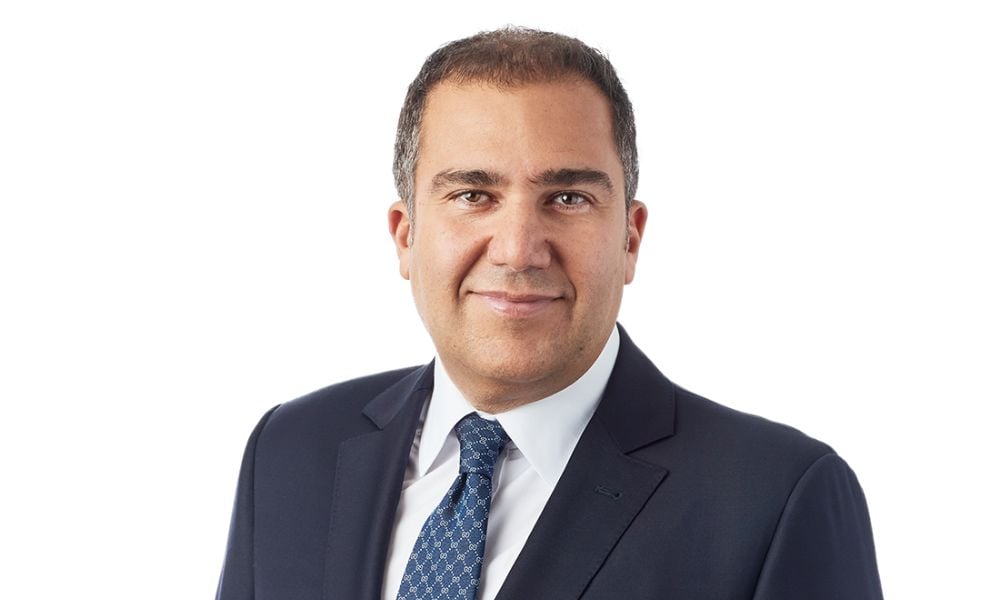Data-driven, objective assessments can reveal what’s under the surface to find the right fit for both employers and employees

Interest in behavioural assessments for recruitment and workforce management is increasing as they become more accessible and affordable for organizations. Canadian HR Reporter spoke with Greg Ford, president, CEO, and co-founder of TalentClick in Vancouver about behavioural assessments.
Q: What exactly are behavioural assessments?
A: “[Behavioural assessments] are a piece of the puzzle to help predict who will be top performers. An interview is a performance and many people perform quite well in an interview, but we don't need them on the job to perform well in an interview, we need them to do the job. That's where you need a predictive, normative behavioural assessment. It's unbiased, data-driven, and based on statistical probabilities. It's a good tool that gives a bit more certainty than observations and an interview, which isn't the normal environment that someone is going to be in while they're on the job.
“We look under the cover of how someone's hardwired and we're very careful to not say someone is born with a bad personality. It's all about fit for the job and the culture. It's a fit for the employer finding the right employee, but it's also a fit for the worker and helping them find meaningful jobs where they are energized.”
Q: What can behavioural assessments bring to recruitment?
A: “They bring that extra layer of objective data. The software doesn't care what someone looks or sounds like, how old they are, or what their race or gender is. It's more about inherent qualities and tendencies that we're born with and lead to certain impulses, and how that drives our behaviour in the workplace.
“A good recruiter or hiring manager will look at that before an interview and consider what sort of behavioural interview questions to ask, as opposed to the typical ‘What are your strengths and weaknesses?’ That's not a very good question, because a lot of people know how to bluff their way through that… But if the recruiter can say, ‘That assessment you did beforehand is showing you have some wonderful strengths but, like all of us, it's also showing you there's a few areas for improvement or development. Let's talk about some of those things.” Now the applicant can't really bluff their way through the interview and it becomes a more authentic, meaningful interview.”
Behavioural interviewing can provide important information during the hiring process when done properly, says another expert.
Q: How can these assessments help with retention, workplace culture, and productivity?
A: “Employee retention starts with hiring the right people who are a better fit for the job; they're more energized by doing the job, and they find the culture to be a right fit. So, if you find those people ahead of time, you'll definitely see a reduction in employee turnover.
“The second thing is if you're just starting to use assessments for your current employees, many in our industry will offer a participant report for each employee. It's written to the employee and it will say, ‘Here are your strengths. Here's how you are hardwired.’ A lot of younger people really like to know who they are and how they stand out from others. They want a personalized, tailored employee development or coaching plan. Most people find that really interesting and they embrace it because they want to improve.”
Q: What can HR gain from behavioural assessments?
A: “The best HR people need to be able to prove that they're helping move the needle. Gains are always about saving time, saving money or making money. It's not just about a nice little employee relations and performance management discussion. That's great, but the CFO and the CEO really care about how HR is helping be strategic with those gains.
“So, if HR is using tools like behavioural assessments and they're able to show a year-over-year decrease in employee turnover, they can assign a value and a return on investment for that. There are many examples, such as finding people who are less risk-prone so there'll be fewer safety incidents and fewer lost-time injuries, which helps decrease insurance premiums, potential lawsuits, and negative publicity.”

Greg Ford
Research has found that employees who are likely to leave give off behavioural cues.
Q: What are some elements of a good behavioural assessment process?
A: “Number one, if you're using it for hiring, you want a good normative assessment. Compare each individual against a sample population. There are other assessments out there — like the disc profile or the Myers Briggs — that are good tools for individual employee development or team-building workshops, but they're not validated for screening and selection for hiring.
“And the second is you want one that is mobile-friendly and available 24-7, and written at a basic reading level. Some employers have lower-level front-line roles where the people are not very well educated or have English as a second language, so you want assessments to be written at a basic reading level or in multiple languages [so there are] no adverse impacts or discrimination based on gender, race, age, and a few other factors.
“That's really important, especially in this day and age with being legally defensible in your hiring process. There’s diversity and inclusion, too, with recruitment — making sure that there's accessibility to all candidates.”
Q: How can behavioural assessments be misused?
A: “The biggest no-no is that an organization should not be using them as a pure pass or fail. We're just one piece of the puzzle, we're not the magic solution or the silver bullet. Get rid of the word ‘test’ because it implies pass or fail. Everyone is on a spectrum and there are no good or bad personalities — it's all about fit.
“Some organizations have a lot of applicants, so they can be more selective. But if they have a hard time finding enough applicants and they can't use the benchmarking cut-off score that they would like, we have to look at people that are scoring 50 or 60 per cent. It's not up to us to say, ‘Pass/fail and here's the cut-off.’ It all depends on context. It's a tool that’s part of the big picture.”
Talent acquisition and retention is more proactive than ever before thanks to technology, says an expert.




